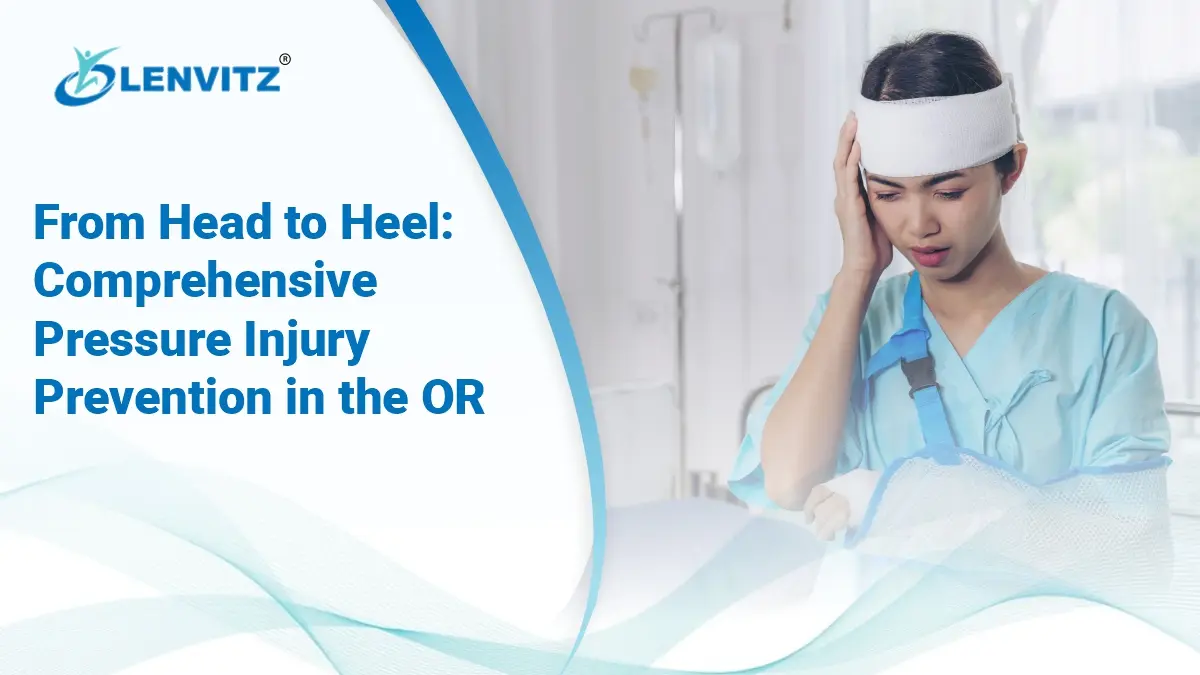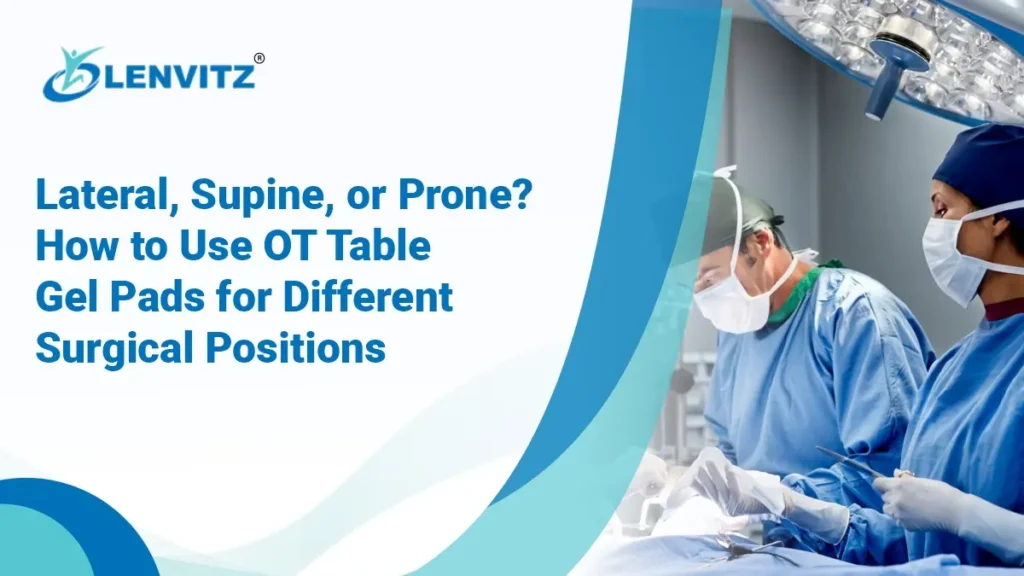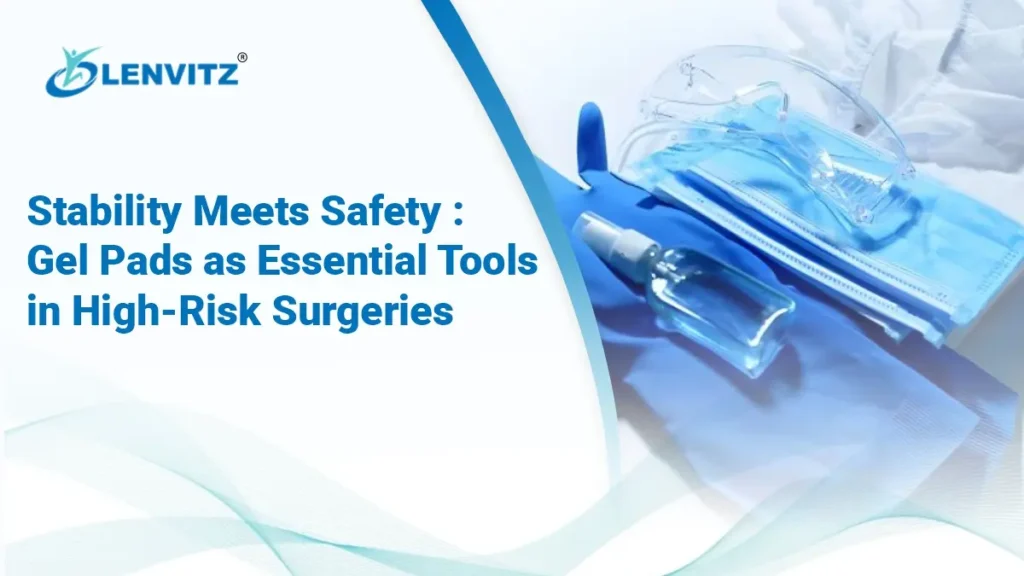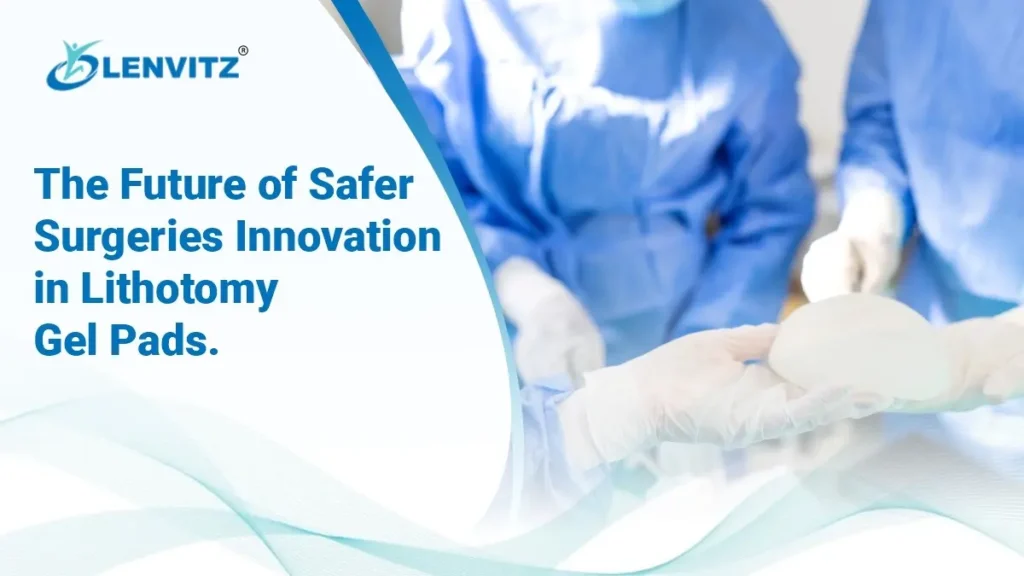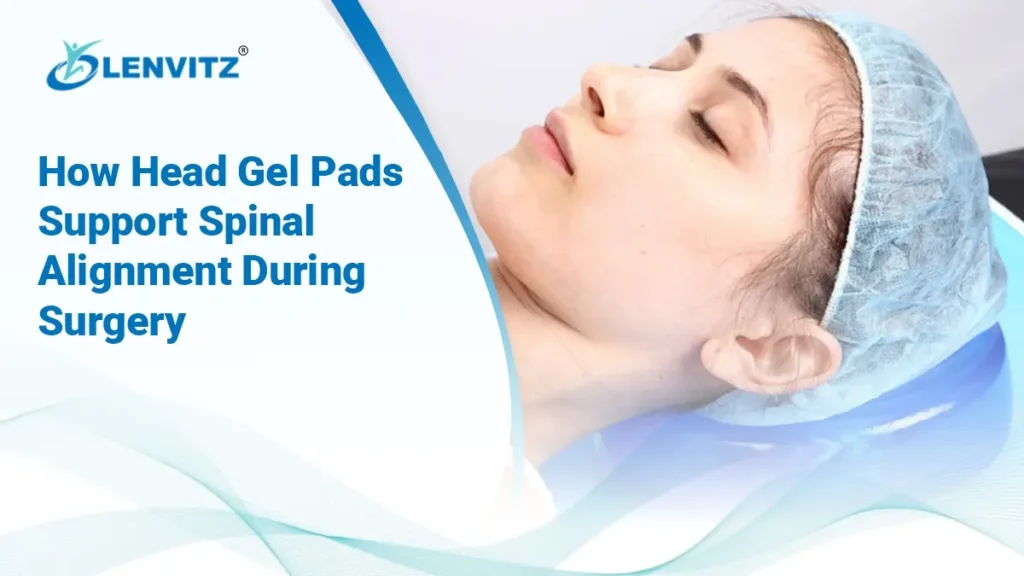The safe positioning of the operating room begins with the basic simple steps, regular steps and the correct supports form head to heel like the use of heel pads, lateral position gel pads, reliable lateral positioner, OT table position gel pads and a comfortable OT table mat. The intention is to distribute the pressure uniformly, prevent shear and friction, and have the body positioned in its normal position during the operation.
The causes of pressure injuries
The patients in the operating theater are not allowed to move or spend long hours on hard surfaces during surgery thus exerting additional pressure on the bony points such as the head, shoulder blades, sacrum, hips, knees, and heels. Anesthesia suppresses natural pain signals and movement such that tiny points of pressure may become skin damage unless they are avoided in time.
Principles of basic prevention.
- Evaluate the risk prior to surgery and arrange the supports required based on the condition of the patient and time of the surgery.
- Make the body straight, do not subject the skin to sharp edges and use soft, contoured supports to distribute the weight evenly.
- Minimize shear and friction through the use of smooth non-slip gel surfaces and without wrinkles under the body.
OT table mat: The base layer
The bases are an OT table mat or full length gel overlay. It protects the whole body, minimizes the peak pressure, and stabilizes the surface and renders it slip-resistant. This is beneficial in short and long-term cases as well as in the support of supine, lateral and prone positions.
OT positioning gel pads: positioning
Add focused gel pads on top of the OT table mat at high-risk areas:
- Occiput or face head ring or donut (in prone position) to avoid the direct pressure on eyes and nose.
- To reduce the load on bony ridges, shoulder, scapula and sacrum pads.
- Armboard cushions on elbows and the ulnar nerve area.
- The use of calf supports to relieve the pressure on the lower legs and enable heels floating.
Protect the most sensitive part; heel pad
Heels are small but have a high risk since there is only a little soft tissue. A good heel pad supports the heel and ankle, takes the weight off the heel and reduces the friction caused by the micro-movements. Wearing a heel pad along with soft calf elevation ensures that the heel is not in contact with a table and it is one of the best methods of avoiding skin breakdown in the heel region.
Lateral position gel cushions: Stability and comfort
In the lateral posture, the body lies on a reduced number of points, therefore more pressure is experienced on the ribs, shoulders and hips. Lateral position gel pads distribute weight and decrease shear and assist in aligning the spine. Position between the greater trochanter (hip), rib cage, dependent shoulder and between the knees and ankles so that the bones do not contact each other.
Lateral positioner: Position the posture on the safe side
A side lying positioner helps the patient lie on the side position without excessively tightening him or her. It minimizes slight movements that have the ability of forming shear and hot spots. Apply it with the lateral position gel pads such that there is cushioning of the body and stabilization.
After draping, recheck every time to ensure all has not moved.
Practical setup: Head to Heel
- Head and face: Proceed with contoured head ring, in prone position, no pressure applied in eyes and nose and re-examine after draping.
- Shoulders and axilla: Gel shoulder pads or soft axillary roll should be used to protect nerves, however, neither hard roll nor tight tapes.
- Torso and Sacrum: OT table positioning gel pads should be placed on the scapulae and sacrum on the OT table mat to evenly distribute the load.
- Arms and elbows: The arms should be in neutral position on armboards with pads; gel beneath the elbow crease should be put to prevent ulnar.
- Hips and knees (lateral): Gel pads with lateral position should be placed over the greater trochanter and dependent knee; a soft gel separator must be placed between the knees and ankles.
- Calves and heels: Lift the calves and support each heel on a heel pad and make sure that the heels are not in touch with the surface.
Simple workflow for teams
- Prior to surgical operation: Conduct a risk assessment quickly, select the appropriate combination of OT table mat, OT table positioning gel pads, heel pad, and lateral positioner depending on position and duration.
- In surgery: Make sure that wrinkles are not visible under the body, pads are over correct areas and that straps are tight without being tight; re-check pressure points at sensible junctions.
- Post-operative: Examine the most common risk areas (occiput, shoulders, sacrum, hips, heels), report on the state of the skin, and include the information on the positioning in the handover.
Tips for longer cases
- Use full-length OT table mats which will minimize the total load.
- Insert additional gel cushions where there is pressure in the case in case the case is taken longer than was anticipated.
- Do not make the skin wet, or cold, both of which are predisposing factors to injury.
- Putting it all together
- The most effective precaution is to maintain a regular head-to-heel routine: include OT table positioning gel pads at the highest risk points, off-load the heels with a heel pad and in the side lying case include lateral position gel pads and a lateral positioner. Such a simple combination is able to decrease the pressure peaks, shear and friction, maintain the body in the right position and help patients recover without unnecessary skin damage.
(FAQs) on Pressure Injury Prevention in the OR
It’s a wound on the skin, often over bones, caused by being pressed down for too long.
Because they are asleep and can’t move to relieve the pressure from the hard operating table.
The back of the head, the tailbone (bottom), and the heels (back of the feet).
The injuries typically form over bony areas that have less natural padding. The most vulnerable spots include: The Heels, the Tailbone/Sacrum, the back of the Head (Occiput), and the shoulder blades or elbows. Your blog addresses the critical need to protect all these areas, “from Head to Heel.”


